Sinking feeling: Is the AUKUS plan feasible?

Yet doubts are growing. The more we learn about AUKUS, the more pressing the questions about it become. There are some obvious concerns about the astonishing cost, the environmental risks and the nuclear proliferation consequences. And there are more fundamental questions about whether we need nuclear-powered submarines at all, whether the plan to get them could possibly work, and whether the wider strategic consequences will make us less rather than more secure.
I think these issues will overwhelm AUKUS and sink it. The sooner that happens the better, because until AUKUS is abandoned we will not be able to get defence policy back on track and start responding effectively to the extraordinary strategic challenges Australia faces today.
Does Australia need nuclear-powered submarines?
No government had seriously considered nuclear propulsion for our new subs before the AUKUS plan was hatched. Instead, Canberra was fully committed to conventional submarines and had embarked on an ambitious and extremely expensive project to build 12 Attack-class vessels to a French design. So why did they dump that project and opt for nuclear-powered instead? And do those reasons hold water?
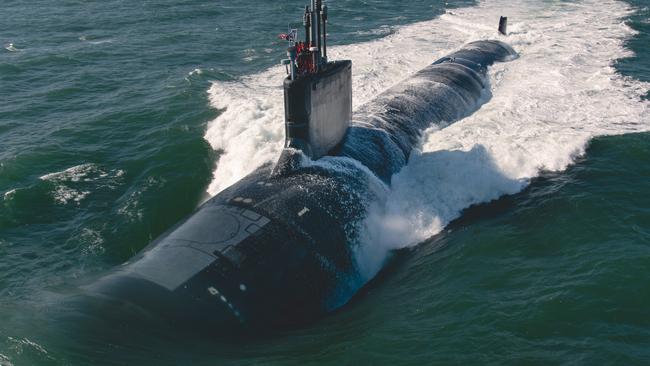
Something about the idea of nuclear power captures many people’s imaginations. They are convinced nuclear-powered submarines are so obviously far superior to conventionally powered boats that no further analysis is necessary. Enthusiasts call them the “apex predator” of the seas, and suggest that even a handful of them can fundamentally change the maritime strategic balance in our region. But this is not true. A nuclear-powered submarine of the kind we are supposed to be getting under AUKUS – an attack submarine, not one carrying nuclear-armed ballistic missiles – carries the same kinds of sensors and weapons as a conventionally armed sub and does the same job. Why, then, are nuclear-powered submarines supposed to be a better choice for Australia?
Like most defence investment decisions, this is basically a question of cost effectiveness. Is the extra cost and risk of a more sophisticated piece of equipment justified by better performance in battle? The usual and instinctive response, perhaps understandably, is that the more expensive and sophisticated option must be the better choice, but long experience shows this is seldom correct. That is because simpler and cheaper alternatives are easier to build, easier to operate, more reliable and – crucially – can be had in bigger numbers. Military history is full of cases where larger numbers of cheaper, simpler weapons systems have outperformed smaller numbers of more expensive, sophisticated adversaries. A classic example comes from the Eastern Front of World War II. The Soviets built 80,000 simple but effective T-34 tanks that prevailed over 8000 much more advanced German Panzer IVs. As Stalin supposedly said: “Quantity has a quality all its own.”
So the first key question to ask about AUKUS is whether, in Australia’s circumstances, the operational advantages of nuclear-powered submarines justify the higher price tag and greater risks of buying and operating them. The main reason the government has given is detectability. This is a critical issue because a submarine’s ability to avoid detection while submerged is its decisive advantage in battle.
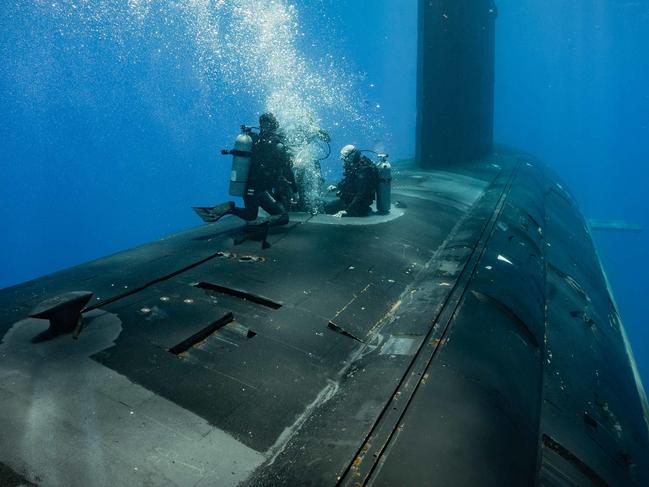
The government’s stated concerns about detectability focus on the subs’ need to regularly come up to periscope depth, close to the surface, and run their diesel engines to charge the batteries that power them when submerged. To do this they must raise their diesels’ air intake and exhaust above the waves. The resulting “indiscretion” is not very big – the “masts” that poke into the air are just a few centimetres in diameter and a metre or so high – but it offers detection opportunities to an alert and capable enemy. “Snorting”, as this procedure is known, has always been a vulnerability of conventional submarines, and a significant disadvantage compared with nuclear-powered ones.
The government now claims new detection technologies are going to make snorting submarines much more vulnerable to detection, to the point that conventionally powered submarines will become operationally ineffective against capable adversaries.
Why has the government reached this conclusion? It obviously did not think this was a big problem when it signed the French contract for 12 conventional submarines in 2016. Right up to the AUKUS announcement in 2021, it repeatedly assured us the Attack-class was exactly the submarine we needed. In fact, the Abbott government was evidently quite relaxed about the risks of snorting when it set the requirements for these new submarines in 2015. Surprisingly, it ruled out two technologies that would have reduced the need to snort. One was the use of new-technology batteries in place of the old lead-acid types, and the other was the fitting of an air-independent propulsion system.
So, did the government suddenly learn, sometime between 2016 and 2021, of a dramatic and unexpected technological breakthrough in the detection of snorting conventional submarines? If so, it has not told us about it. No doubt the details would be classified, but it is odd that other well-informed governments haven’t got the same message and drawn the same conclusion. Many countries with long histories of serious investment in submarines – Japan, Germany, Sweden, Italy, Spain, The Netherlands, India, Russia and, yes, China – are still building conventional submarines. If they know what our government claims to know, why aren’t they also dumping these projects?
These questions become even more acute when we look at what is really happening in the arcane world of submarine detection. There is a growing consensus that the long-running hi-tech cat-and-mouse contest between ever-stealthier submarine designs and increasingly sensitive detection systems is now taking a decisive turn in the submarine hunters’ favour. A whole range of technologies seems poised to make submarines easier to find. They include not just refinements in well-established acoustic and magnetic methods but new approaches including the detection of disturbances in the ocean from a submarine’s displacement and wake and from minute chemical traces left by submarines as they pass through the water, using data collected by satellites and uncrewed underwater drones.
The big trends in submarine detection are raising doubts about the future stealth of nuclear-powered boats that are just as grave as – or even graver than – those about conventional subs. That is not surprising because, although they do not need to snort, nuclear boats are bigger, faster, hotter and, in some circumstances, noisier than conventionally powered subs, all of which makes them inherently easier to find. Nor is it surprising that cutting-edge submarine-detection research, which is mostly funded by the big nuclear-armed powers, focuses on finding nuclear-powered subs. Their highest priority is finding their adversaries’ nuclear-powered, nuclear-armed ballistic missile submarines.
But what about the other arguments for nuclear-powered subs? Their biggest advantage is speed. A nuclear submarine can deploy to a distant area of operations much faster than a conventional boat, so it can spend a bigger proportion of its mission actually hunting the adversary. But this advantage must be set against the difference in cost, and what that means for fleet size. For the $368bn we are planning to spend on eight AUKUS boats, we could have a fleet of more than 40 conventional submarines. This huge difference in numbers swamps the advantage of nuclear propulsion. Having so many additional subs in the battle more than makes up for the advantages that each nuclear sub has over a conventional one. Alternatively, a much smaller investment – say, in a fleet of 24 conventional subs, costing $200bn – would still deliver more combat power where it counts than eight nuclear-powered boats, and deliver it much faster and with far less risk of failure. Australia could easily crew this many submarines given good management and adequate pay.
One might ask, in view of these numbers, why any countries bother with nuclear-powered submarines. The answer is that for some missions that are critical to major nuclear-armed powers, a conventional submarine cannot match a nuclear boat. The most important of these is hunting an adversary’s nuclear-powered subs, especially their nuclear-armed ballistic missile submarines. Another is escorting their aircraft carrier battle groups. These missions require the speed that only nuclear propulsion can provide, and if these are the missions a submarine force is designed to undertake, then the cost of nuclear propulsion is probably justified.
If the primary task of our submarine fleet is to team up with the US Navy to hunt Chinese ballistic missile subs or escort US carriers in the South China Sea, then nuclear propulsion might make operational sense. If, on the other hand, our primary military task is to prevent China projecting power by sea against us or our close neighbours, then nuclear-powered submarines make no operational sense at all.

Will the AUKUS plan work?
We also need to explore a second simple question that people have only recently begun to ask. Will AUKUS actually deliver any submarines?
The first step is a radical overhaul and upgrade of the old Collins-class boats to keep them going until the new submarines arrive.
Though this is the simplest part of the plan, it is in itself a daunting task. It involves a virtual rebuilding of the old Collins boats, replacing many of their key systems and components. Submarine upgrade projects such as this are always plagued with unexpected problems and unplanned demands, and this one is being started far too late. It has been clear for years that a major and complex upgrade of the Collins-class boats, called a LOTE (life-of-type extension), would be necessary to avoid a gap between the Collins-class and its replacement, but successive governments have unaccountably delayed serious preparations for the task. Even now the scope of the project has not been finalised, and serious work will not start until 2026.
Defence has acknowledged that the project involves more than 1000 tasks for each submarine, that many of the tasks are interdependent, and that schedule overruns are virtually certain. There is now no chance the upgrades will proceed quickly enough to prevent a major drop in the number of Collins-class subs fit to go to sea and ready to fight. That is a big problem, and not just because we will be unprepared to meet threats that arise over the next 25 years while the transition to nuclear-powered boats is supposed to take place. Any sustained cut in the number of subs available for operations will mean too few crew members get the training and experience they need to become competent submariners. This problem is especially serious because the Virginia-class boats have a crew of 120 – twice as many as the Collins boats. The whole AUKUS plan may well collapse because we will not have the crews to operate nuclear-powered subs if and when they begin to arrive.
Second, even if the Collins-class LOTE goes better than expected, there are real questions about whether the RAN will be prepared to take delivery of the Virginia-class submarines by the early 2030s. It has less than a decade to learn to operate, maintain and support nuclear-powered submarines, including their nuclear reactors.
Our navy and defence organisations have never faced a challenge such as this. With its dismal record of managing much simpler tasks, the chances of the RAN being ready to operate Virginia-class subs safely and effectively and on schedule when the AUKUS plan requires are very low, especially when it must simultaneously deliver the Collins-class LOTE, prepare to build the AUKUS-class boats, and complete a massive and highly problematic program of surface-warship construction. And if the Virginias cannot be brought into service on time, the whole AUKUS plan collapses. We will be without a submarine capability for several dangerous decades, and the skills base of our submarine service will die away, leaving us unable to operate the AUKUS-class boats.
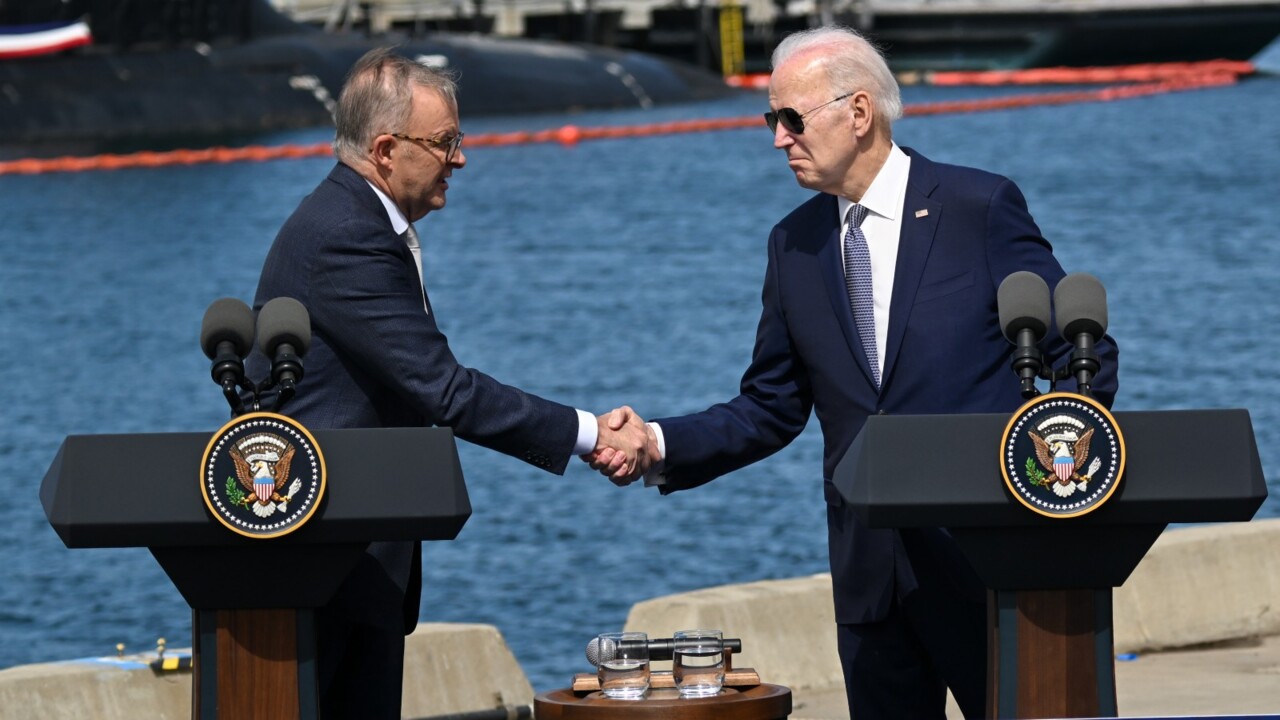
But this is not the biggest threat to this phase of the AUKUS plan. There are even more serious problems in Washington. America has never sold nuclear-powered submarines to another country, and already both the US Navy and congress have signalled real and very reasonable doubts about whether it is wise to do so now.
America has no Virginia-class submarines to spare. These submarines are becoming more critical to US naval strategy as major surface ships become more vulnerable, while the threat from Chinese submarines grows. For years Washington’s plans to expand the Virginia-class fleet have been derailed by deep systemic problems in the US submarine-building and maintenance industry. The number of boats stuck in repair yards has grown, while the building yards have consistently failed to meet their targets.
Instead of delivering two new Virginia-class boats a year, the two yards that build them have delivered only 1.3 boats a year. The US Navy and members of congress have made it clear they will not agree to sell Virginia-class boats to Australia unless that changes. If anything, the problems in US submarine construction are getting worse, not better, as US yards must also ramp up construction of the new Columbia-class ballistic missile submarines at the same time.
Even if these construction targets can be met, there are genuine doubts in Washington about whether it makes strategic sense for America to pass submarines to Australia rather than keeping them for the US fleet.
Ministers in Canberra cite strong bipartisan congressional support for the US-Australia alliance and for a robust response to China. They also hope the $US3bn ($4.6bn) that Australia is contributing to the US submarine maintenance program – as well as the still-unspecified price we will pay for the Virginia-class boats themselves – will help assuage US concerns. But this money is a drop in the bucket that will make no material difference to America’s submarine shortage. The fact remains that the AUKUS plan would weaken America’s submarine forces in a war with China. Even if Australia promised that its RAN Virginia-class subs would fight alongside American boats in a war with China, our inexperienced crews would not operate them as effectively as US crews. And could the US be certain of our commitment? Canberra has refused to make that promise.

It is hard to see how the AUKUS plan can survive this yawning gap between American expectations and Australian commitments.
But let’s assume, for the sake of argument, that America agrees to sell us some Virginia-class subs and that the RAN, having successfully completed the Collins-class LOTE and sustained a sufficient pool of trained submariners, learns to operate the Virginia-class safely and effectively. Then we face the challenges of phase three of the AUKUS plan, which involves designing, building and bringing into service the AUKUS-class submarines.
Britain is supposed to build the first of the class for the Royal Navy, and to iron out the early problems, before production of submarines for the RAN begins in South Australia. Both the British and the Australian ends of this co-operative program will have to deliver if the AUKUS plan is to work. It is more than likely both will fail.
Let’s start with the British. The longer-term future of Australia’s submarine capability is very much in their hands. It is clear the AUKUS-class will be a British design, optimised to meet British needs. We have now committed ourselves to buy it, even though at this stage we know almost nothing about it. We do not know how well it will perform, how hard it will be to build, how much of it can be built in Australia or how much it will cost. This is buying a pig in a poke, which is a foolish way to buy submarines or anything else. By the time these things become clear, it will be far too late to pull out without abandoning our submarine capability. We are placing complete faith in the competence and generosity of our British partners.
There are good reasons to doubt that our faith will be justified because the UK nuclear
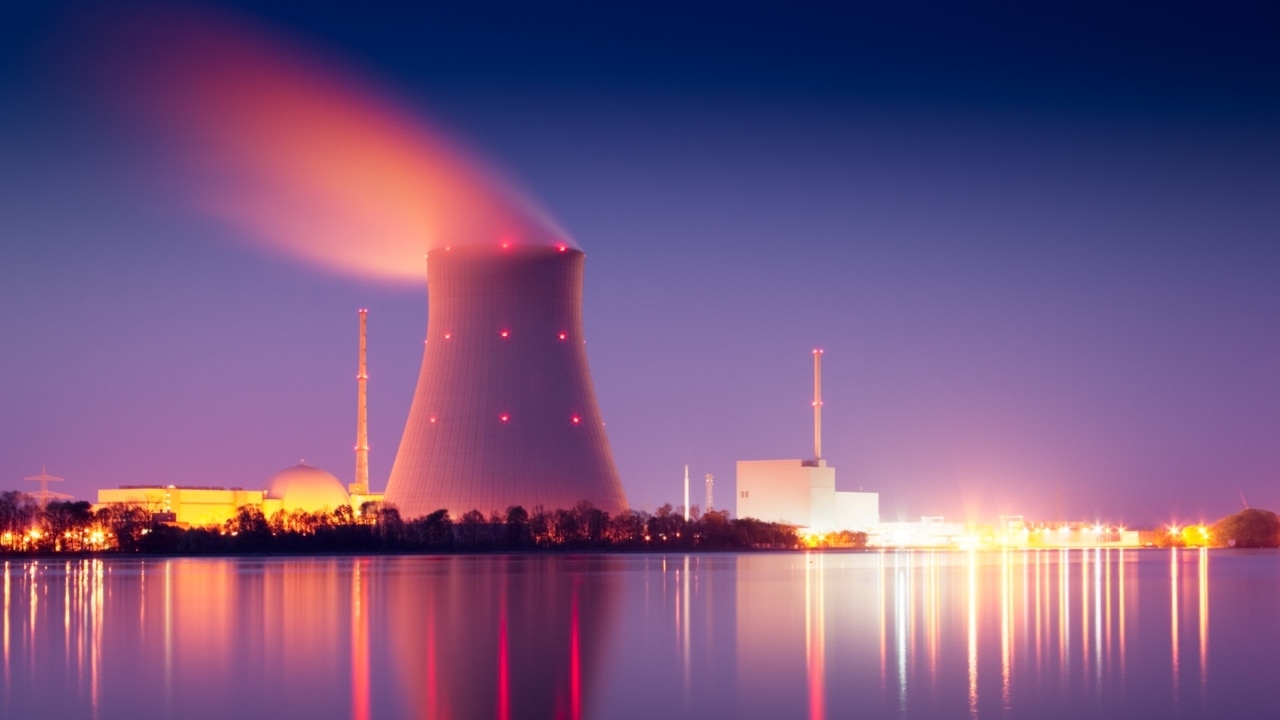
submarine enterprise has had major problems over decades in building and sustaining their submarine forces. The next decade or two will be especially difficult as Britain tries to complete the last of its Astute-class boats, design and build the first of the new Dreadnought-class replacements for the Vanguard ballistic missile subs, and design and build the new AUKUS-class boats to an almost impossibly tight schedule.
Then there is Australia’s end of the project. The government is committed to building our nuclear-powered submarines in Australia. This will be by far the most complex and difficult engineering project ever undertaken here. The government hopes to sidestep Defence’s shortcomings by entrusting the whole program to the quasi-independent Australian Submarine Agency, headed by a vice-admiral. There is no reason to think this bit of rebadging will make any difference. Long delays and cost overruns are certain. Outright failure is a real possibility. It is hard to disagree with former Liberal foreign minister Alexander Downer’s withering assessment that the plan to build the AUKUS-class boats in Adelaide is “a fairytale”.
But the problems will not be over if, against all the odds, Australian-built AUKUS submarines enter service on schedule, because the RAN will then face the daunting task of operating these new submarines alongside both the remaining Collins-class and the ageing Virginia-class boat. That means the navy and its support services will find itself, for an extended period, with the extraordinarily demanding task of having to maintain three distinct training programs, three different stockholdings and logistical pipelines, three engineering and technical support teams, and three sets of operational doctrine.
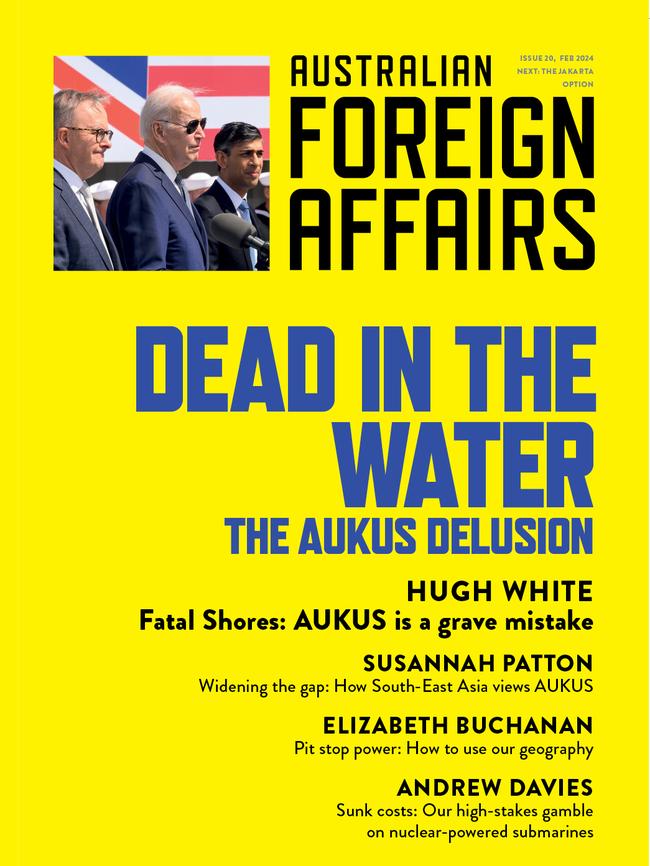
The many challenges the RAN has faced, and so often failed to meet, in operating the Collins-class submarines over the past few decades shows how hard it will be to manage even one class of submarine. To manage three very different classes of submarine, two of them nuclear-powered, at the same time? It defies belief.
We find ourselves in a remarkable situation. Coalition and Labor governments have committed Australia to acquire nuclear-powered submarines that we do not need, via a plan that will almost certainly fail. The longer it takes for this to be acknowledged, the more likely it will be that our submarine capability will simply collapse as the Collins-class boats become unserviceable with no replacements in sight.
This would surely count as the most disastrous defence-policy mistake in our history and one of the worst on record anywhere.
This is an edited extract from the essay Dead in the Water: The AUKUS Delusion, published in the next issue of Australian Foreign Affairs, which is released on Monday.






AUKUS is something of a phenomenon. The bombshell announcement at 7am on September 15, 2021, must rank as one of the most spectacular policy coups in Australia’s history. Though details were scarce, it was immediately and almost universally acclaimed as a triumph. Internationally, too, it has been a sensation, seen as transforming the Asian strategic balance and reshaping the global order. All this has given AUKUS an aura of inevitability. It feels too big and too bold to fail.